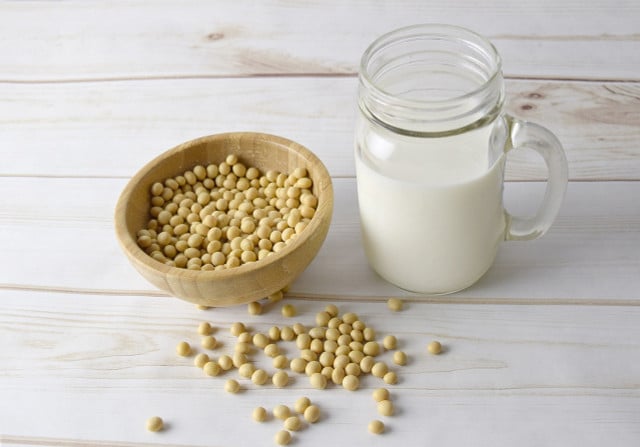
Both adults and children can suffer from a soy allergy. Read here about the symptoms you should be aware of and which foods you should remove from your diet.
Originally from East Asia, the soybean has now also found its way into Western cuisine. The legume is not only the basis for tofu, tempeh, soy milk and soy yoghurt, but is also found in many different foods in the form of soy lecithin, soy oil, soy flour or isolated protein, making it an indispensable part of our everyday diet.
This can be problematic for people who suffer from a soy allergy.
Soy allergy: These symptoms suggest

(Photo: CC0 / Pixabay / bigfatcat)
A soy allergy can occur in two different ways. Either your immune system is sensitized to it the first time you eat soy – in this case the allergic reactions occur the second time you eat it. Or you develop a cross allergy: If you are allergic to birch pollen, this already sensitizes your immune system to soy. In this case, an allergic reaction can occur even after the first contact with soy.
The symptoms of a soy allergy are not very different from those of other food allergies. The most common are hives, itching and swelling of the skin, mouth and throat shortly after eating. But the following symptoms can also be further signs of a soy allergy:
- Nausea and vomiting
-
Diarrhea, abdominal cramps, flatulence
-
Neurodermatitis and hives
Warning: In rare cases, a soy allergy can lead to anaphylactic shock. Asthmatics are also said to be more susceptible to a soy allergy. However, more detailed studies are needed to determine this, and research is still very sparse.
Unsuitable and suitable foods for soya allergy

(Photo: CC0 / Pixabay / qimono)
If allergy tests have shown that you are allergic to soy, you will need to change your diet. You will need to remove foods that contain soy from your diet and replace them with other foods.
For example, the following foods contain soy:
- Soybeans
- Edamame
-
Soy sauce and paste
- Miso
- Natto (fermented soybeans)
- Tempeh
- tofu
- real soy sprouts
- Soy flour
- Soy yoghurt
- Soy milk
- Soy flakes
- Soya margarine
There are many other products that can contain soy, even though soy is not clearly stated on the packaging. These include pizza, cheese, spreads, cereals, sauces, baked goods, spice mixes and baking agents. You can read how to recognize this in the next section.
However, you can eat the following ingredients without a doubt:
-
Nuts and seeds
- fruit and vegetables
- Fish and meat (although there are many ethical, ecological and health reasons against eating them)
- Milk, yoghurt, cheese, cottage cheese and cream, if natural
- Eggs
- Herbs
- potatoes
-
Olive oil, rapeseed oil, sunflower oil
If you are vegan and have a soy allergy, you can use seitan and plant-based milk and yoghurt alternatives made from rice, coconut, almonds and oats. Grains, other legumes, nuts and seeds can also provide you with plant-based protein instead of soy products.
Soy allergy: Detecting soy in packaged foods

(Photo: CC0 / Pixabay / takedahrs)
When you shop in the supermarket, you often cannot tell from the outside whether a product or food contains soy. In this case, you should take a look at the list of ingredients on the packaging. Soy can be listed under different names:
- E322 Soya lecithin
- E426 Soya bean polysaccharide
- Edamame
- Kinko
- Miso
- Okara
- Shoyu
- Tamari
- tofu
- Textured Vegetable Protein (TVP)
- Yuba
- Natto
- Tempeh
If you are allergic to soy, try to prepare your own meals from unprocessed foods as much as possible. This way you know exactly what you are eating and can simply avoid soy.
Read more on Techzle\.com:
- Dairy-free, organic and vegan: the quark without quark
- Make your own tofu: A recipe for the vegan soy product
-
Vegan regional: Soya and seitan are also available from Germany
Revised by Lea Hermann
** marked with ** or orange underlined Links to sources are sometimes affiliate links: If you buy here, you are actively supporting Techzle\.com, because we then receive a small part of the sales proceeds. More information.